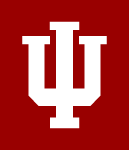The lab of Joshua Ziarek has published a new article in Protein Science, entitled “A method for selective 19F-labeling absent of protein sequestration (SLAPS).”
Abstract. Fluorine (19F) offers several distinct advantages for biomolecular nuclear magnetic resonance (NMR) spectroscopy such as no background signal, 100% natural abundance, high sensitivity, and a large chemical shift range. Exogenous cysteine-reactive 19F-probes have proven especially indispensable for characterizing large, challenging systems that are less amenable to other isotopic labeling strategies such as G protein-coupled receptors (GPCRs). As fluorine linewidths are inherently broad, limiting reactions with offsite cysteines is critical for spectral simplification and accurate deconvolution of component peaks – especially when analyzing systems with intermediate to slow timescale conformational exchange. Here, we uncovered non-covalent probe sequestration by detergent proteomicelles as a second source of offsite labeling when using the popular 19F-probe BTFMA (2-bromo-N-(4-(trifluoromethyl)phenyl)acetamide). The chemical shift and relaxation rates of these unreacted 19F-BTFMA molecules are insufficient to distinguish them from protein-conjugates, but they can be easily identified using mass spectrometry. We present a simple four-step protocol for Selective Labeling Absent of Probe Sequestration (SLAPS): physically-disrupt cell membranes in the absence of detergent, incubate membranes with cysteine-reactive 19F-BTFMA, remove excess unreacted 19F-BTFMA molecules via ultracentrifugation, and finally solubilize in the detergent of choice. Our approach builds upon the In-Membrane Chemical Modification (IMCM) method with the addition of one crucial step: removal of unreacted 19F-probes by ultracentrifugation prior to detergent solubilization. SLAPS is broadly applicable to other lipophilic cysteine-reactive probes and membrane protein classes solubilized in detergent micelles or lipid mimetics.

 The College of Arts
The College of Arts